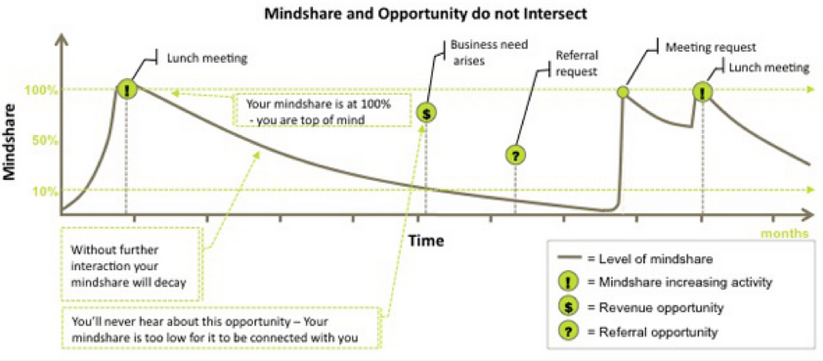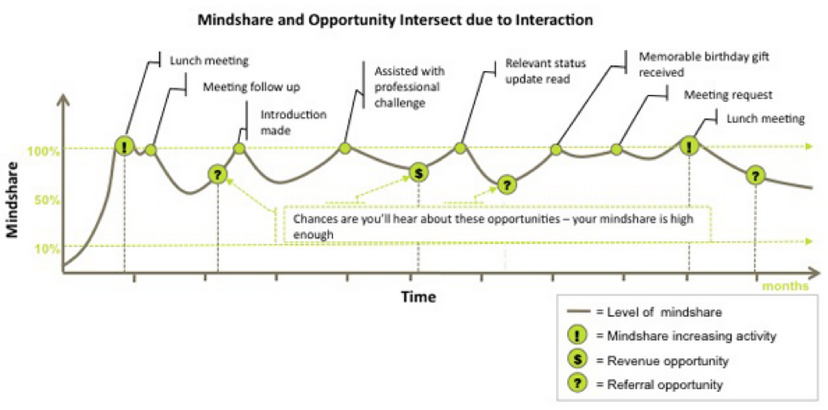Back in the “day,” experts touted “Girard’s Law of 250” as instrumental in creating and nurturing your business network. It was based on a non-scientific theory that the average number of attendees at a funeral or a wedding was 250. From this concept, it was assumed that the average size of an individual’s professional network was 250 people. And, from the magnitude of the network, a successful, growing business could be launched.
This, of course, was pre-google. There was no easy way to verify its validity. Like the childhood game of “telephone,” it was passed down from generation to generation of sales professionals as the touchstone for business development — develop relationships with an average of 250 people and ensure your success. It was that simple. We followed it blindly, using it to guide our relationship marketing.
Joe Girard, the world’s greatest #1 retail salesman as attested by the Guinness Book of World Records, wasn’t alone in his business strategy of developing your business network.

Dr. Robin Dunbar, an anthropologist, and evolutionary psychologist notes the average size of an individual’s social circle to be 150 people. Pew research, on the other hand, logs the size of the average American network as 634 connections.
No matter the average size of one’s network, nurturing your network is key — especially when it comes to acquiring and retaining clients.
Relationships: The Key to Business Success
It’s a known fact that it is 5X costlier to acquire a new client than to maintain and retain a current or former client. Furthermore, a 2% increase in spending on client retention will reduce marketing costs by as much as 10%. In a boot-strapped small business, those are some impressive numbers!
For most small business owners, a more engaging association with our clients and potential clients is important. Connecting with our clients beyond the transaction is a valuable — and extremely gratifying — aspect of small business ownership.
With effort focused on satisfaction, experience, and retention — rather than on the sales transaction — bonds of trust begin to take shape. But don’t get too comfortable . . .
The Decline of Mindshare: The Learning/Forgetting Cycle
German scientist, Hermann Ebbinghaus, was the first to define the concept of the learning curve. He discovered that by consistently dispensing learning over some time, we could radically improve our ability to learn. Additionally, if not repeated at regular intervals, accessibility to the learned material would slowly decay to the point of feeling as though it had been forgotten. (Hmmm, my high school history class is coming to mind.)
What does this have to do with the business network? PLENTY!
Relationship development and marketing are all about mindshare. Without time and attention, the flourishing relationships you worked so hard to foster rapidly decay.
Consider this: when someone first interacts with you and your business, you occupy their “mindshare” — at least in the immediate time frame — as they “learn” about you. If an opportunity arises during that “learning” time frame — while you remain top of mind — they are most likely to think of you. However, over time and with little repeat interaction with your business, they soon “forget” you. (Nothing personal, right?)

© Mindmaven
However, according to Dr. Ebbinghaus, regular interaction intervals (aka learning) maintains a level of knowledge that is more easily accessible in times of need. Hence the conclusion is that regularly interacting with your primary network leads to more business and referrals.

©Mindmaven
Nurturing Networks
The nuts and bolts of leveraging the learning/spacing curve to nurture your network aren’t well established. However, insight into this phenomenon can elevate your relationship marketing game considerably.
Consider this as a starter plan for building and/or restoring trust in your network:
1) Identify 20–30 raving fans.
Ken Blanchard, the author of Raving Fans, defined a raving fan as “a customer who is so devoted to your products and services that they wouldn’t dream of taking their business elsewhere and will sing from the rooftops about just how good you are.”
2) Reach out to one fan every day.
Bam! That’s it. Five minutes each day reaching out to the most valuable members of your network — not to sell — but rather to say hi, discover what’s new in their world, get to know their needs today as well as tomorrow — to show you care and stay top of the mind for whatever else may come along.

